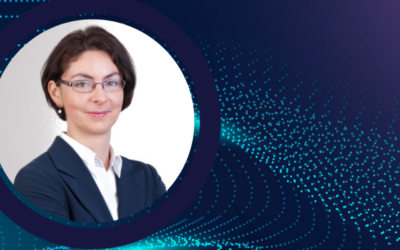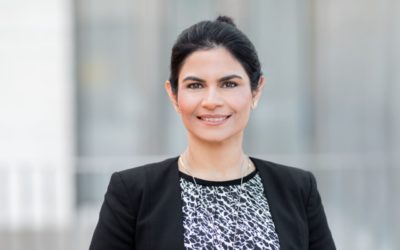by Chantel Rademeyer
Closing a week spent considering my own personal role and responsibility in fighting against racism, World Environment Day last Friday was a reminder that combatting behaviours and factors that pollute and destroy the environment is also my responsibility.
Closing a week spent considering my own personal role and responsibility in fighting against racism, World Environment Day last Friday was a reminder that combatting behaviours and factors that pollute and destroy the environment is also my responsibility.
This sentiment was echoed when we spoke to our contacts and friends in the Falcon Brook community.
My conversation with Dr Tauni Lanier, known to many from her 30 years in sustainable finance was a call to action, to say the least.
“If the UN Sustainable Development Goals are to be delivered then we all must lead. By that I mean individuals, corporates, municipalities, cities, not for profits, the private sector, everyone. We all need to actually deliver.”
Some people say that the environment will be the positive legacy of the pandemic.
“Everyone is talking about how Covid is helping to change the environment,” continued Tauni. “Climate change is going to be even bigger than Covid. People die from climate change issues all the time. But it’s slower, it’s not like Covid. It’s easier to ignore.”
Is Covid even the only pandemic?
Racism, domestic violence, isolation, mental health, welfare dependence, the disproportionate death toll on BAME communities: all these crises have flared across the world and are in their own ways also pandemics.
From my home office, with a team working with commodities, energy, asset management – some of the most influential and lucrative sectors in the world – I wonder, what can we do to make a positive environmental impact?
“It is really hard to convince people that commodities do fall into an environmental, social and governance (ESG) framework,” said Dr Mike Haigh.
His company now commits to ESG valuations as part of all their equity research. “At first that was a bit intimidating. To talk about oil or aluminium in an ESG framework is tricky. Then you start to look at governance and gender diversity and there’s a way forward.”
Both Mike and Tauni spoke of the importance of identifying specific, measurable steps that combine to make a difference. Measurement of course means data – and this means we can start to measure and rank progress.
“Data helps us to understand trends and where we can have the biggest impact,” continued Lanier. “The use of data and indexing are ways of encouraging the passive investor to start to change. There is a nudging, a changing, that is starting to happen and that will, combined, deliver this steep change that we all need.”
Taking the first step in the right direction may seem small in the face of major environmental impacts and damage, but like the saying goes, the 1000-mile journey begins with just one step.
Mike Haigh said they had set up chat rooms to explore ways of addressing ESG.
“Pension plans are under pressure to follow ESG in a commodity framework. Interestingly, what this means is that they need to see that we are taking concerted steps to drive sustainability. It’s about taking action towards a greater goal that can’t be achieved by only one person or group.”
Data plays a part in the innovation that will be crucial to delivering sustainability in commodities.
“There’s millions of barrels of oil being consumed every day. That’s not going to zero any time soon. Monitoring the environmental performance of the extraction process is a way to tackle that. The satellite imagery that we use to analyse mineral extraction from a market perspective can also show how volumes are growing or dissipating, truck activity, pollution and water table levels. Satellite data can reveal how far a ship is out of the water and indicate how much oil is on the tanker or dumping high sulphur fuel into the ocean. There are ways of tracking these things. And we have to do that, because this is not going to go away.“
Tauni agrees: “Oil and gas and other extractive industries have really been at the forefront of looking at their supply chains and practices because it’s demanded of them, upstream and downstream.”
This requires a willingness across the whole supply chain to discuss the potential for change.
“How do you convince someone that you are actually helping the world by buying and selling commodities futures?” said Mike. “We’ve had lots of conversations with exchanges, for example, to discuss aluminium futures. Aluminium is one of the most energy intensive commodities: 50% of the cost of producing it is energy. So one option is to build an aluminium futures contract that uses geothermal heat for deliverables, or that allows for scrap metal to be incorporated. Delivering ESG in commodities requires innovative ways of thinking.”
Incentives can bring impact on supply chains, through favourable trade finance rates, for example. “If a supplier can show that they are improving E, S or G, then that can trigger a lower interest rate. It could be around child labour or environmental damage where they may be encroaching on forest land. If they can prove that they are going in the right direction, then they get rewarded financially, which is an interesting way of incentivising better practice.”
I sense a real optimism listening to the steps being taken by the people who operate in this world and can see opportunity for achieving measurable environmental gains.
“There is something different this time around,” said Tauni. “There’s something about the way you treat your people that was not really part of the discussion in 2008. I think in part it’s the ability to see the fundamental benefits, if there’s less traffic on the streets, for example. The glorious views of Mount Fuji, seeing the Himalayas from India, pictures that go around the world. We didn’t have that visual transformation back then, so people couldn’t see the impact.”
One really positive aspect was Tauni’s insistence on how interconnectedness means that chipping away at one of the SDGs will almost inevitably impact other goals.
“I use one very notable example,” she continues, “which is the value chain when you put women into the workforce. What happens? Well, children get educated, they get better fed and the whole of the village benefits and starts to develop around her. When you start to look at the diversity of your workforce then suddenly not only is your point of view broader, plus you can sometimes find that you have a license to operate in new markets because you have new voices and understanding. And then this has other effects.”
For me, I think it is possible to change the world a little at a time, and if we all participate, then the impact can be enormous. Every time we make the decision to cycle, scoot or walk to a destination, that helps to achieve something positive for the environment, both during our work and in our personal lives.
Small steps matter. Many of us are also privileged enough to be able to make a much greater impact, and maybe we just don’t realise that we can.
So, I wanted to close by highlighting the efforts of Mehdi Chennoufi, and his involvement in Wanakaset.org, a membership organisation that is developing sustainable, ecological forests in France, Tunisia, Panama and Sri Lanka. His sustainability story was also underscored by data surrounding his own lifetime environmental impact and this led his realisation that he had to do something big to neutralise his impact – and that he was in a position to do this.
This is what Mehdi said to me:
“I realised I was currently a heavy-duty CO2 emitter, probably 250 tonnes a year. But that’s now. To offset my life, I need to think about every year, not just today. If I live 80 years, with 20 years at two tonnes per annum, 15 years at 250 tonnes per annum, another 15 at 100 tonnes per annum, and 30 years at 80 tonnes per annum, that gives me an average of 96 tonnes per year. So I figured I needed to offset 192 tons of CO2 per year for the last 40 years of my life and that was when I bought my first forest.
“Then I realised, I can afford a forest, but many can’t. A billion people across the world still rely on forests for their livelihood: on wood for heating, cooking and even to do their homework at night. So I bought another one to plant more trees for those people.
“Then I realised the thousands of years of human civilisation needed to get me on earth. 3,000 years of civilisation in Tunisia and 200 years of heavy-duty infrastructure development in Europe. I did not want to live so narrowly, so I settled for 1,000 tonnes per year to be compensated and called it quits. In total, that is about 20,000 trees spread across parts of France, Sri Lanka, Panama and Tunisia. We now plant between 1,500 and 2,500 different fruit trees a year.”



